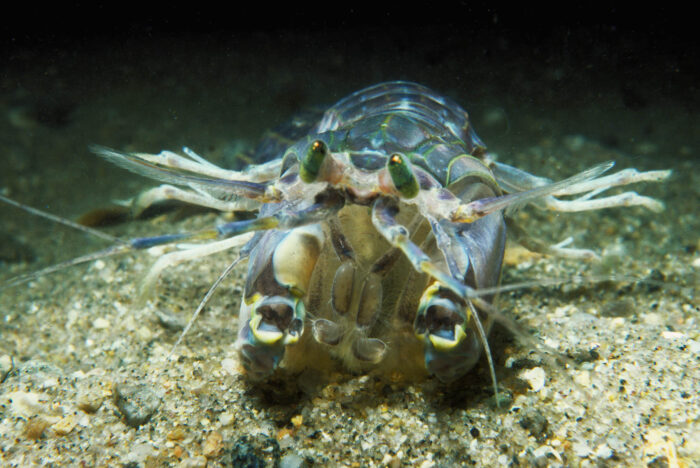Mantis shrimp
Squilla empusa
The mantis shrimp is a crustacean with a flattened, segmented body and praying mantis-like claws. It burrows within muddy flats along the shoreline of the middle and lower Chesapeake Bay.

